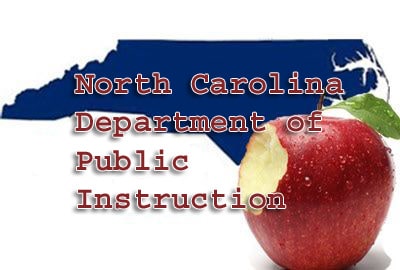

As enrollment rises, legislature slashes agency budget
“People in North Carolina, if they knew how little was spent on administration, they should be sending us ‘thank you cards’ for doing the work to support teachers in the classroom.”
June Atkinson, superintendent of public instruction in North Carolina, is talking about the latest cut to the Department of Public Instruction (DPI), a $300,000 reduction that, all things considered, will deal relatively minor damage to the state department charged with providing support and oversight for local schools.
Last year’s cut, a $2.5 million slash in DPI coffers, did the real damage, forcing the department to once again shed dozens of jobs and services.
Since 2009-2010, student enrollment in North Carolina has grown by nearly 5 percent, with public schools accounting for more than 70,000 additional students. Yet, DPI records show, the N.C. General Assembly has handed down $19.4 million in cuts, forcing the agency to jettison more than 200 administrative jobs.
The 2009 reversal flipped a trend of expansion in the schools’ top office since the 2004-2005 school year, when state officials began adding jobs by the dozens, particularly in support offices for low-performing schools.
In an interview this week with Policy Watch regarding the state agency’s shrinking budget, Atkinson, a Democrat who’s been in office since 2004 despite the Republican takeover of state government in 2010, seems particularly frustrated.
“It hurts us in our capacity to help improve student achievement and growth in schools that really need it,” says Atkinson.
Public school advocates say one of DPI’s most important roles is in providing developmental support and training in high-poverty, low-performing schools. Indeed, earlier this year, DPI leadership touted their school transformation office, which also leverages federal grant funding, to provide coaching and services in struggling districts and schools.
DPI officials told lawmakers that, since 2010, the state’s District and School Transformation office had raised dropout rates in all of the schools it had intervened. Meanwhile, 80 percent of those schools were propelled from the bottom 5 percent of schools in the state.
Yet, due to limited funding, officials said, the office had only been able to work in about 79 of the 581 designated low-performing schools in North Carolina.
“I couldn’t help but wonder about some of the success (we’re) already having,” Rep. Craig Horn, an influential Union County Republican who chairs the House education budget committee, wondered aloud to fellow legislators. “Maybe the answer is already on our plate and we just need to do more of it. Would we not be able to impact more students more quickly?”
Nevertheless, at a time when GOP leaders in the legislature openly war with DPI chiefs over how funding is spent, state lawmakers did not opt in this year’s final budget negotiations to restore any lost funding to the administrative office.
Atkinson said the results will be felt most in low- and moderate-income districts without the cash to offer a well-staffed, local administrative office.
Atkinson added that she believes the funding cuts are simply bad business, pointing out North Carolina spends only about 6 percent of its education budget on administration.
“If you ask any business person, what would be an ideal percentage to spend on administration, I doubt you would find many business people who would have a figure as low as what we spend in North Carolina,” Atkinson said.
DPI staff presented the latest cuts to members of the State Board of Education this week, although they pointed out this year’s $300,000 cut allows the administrative office the flexibility to use lapsed salary dollars — in other words, cash slated for unfilled positions — to meet the reduction, rather than forcing the agency to ax more jobs.
State cuts haven’t always been so generous. Last year’s reduction could not be implemented without the loss of dozens of positions, including jobs designated to intervene in low-performing districts. The cut spurred a bitter spat this year between Atkinson’s office and Senate President Phil Berger over whether DPI was misusing cash designated for student reading programs in order to preserve DPI jobs, a charge Atkinson vehemently denied.
Still, this week, State Board of Education Chairman Bill Cobey, a GOP appointee of Gov. Pat McCrory, described this year’s modest cut as “good news.”
“Thankfully, we got past a year without them making significant cuts,” Cobey said this week. “Hopefully that reflects their growing confidence in us.”
GOP leaders in the General Assembly could not be reached for comment on DPI spending this week.
But Mark Jewell, president of the N.C. Association of Educators (NAE), the largest teacher advocacy group in the state, told Policy Watch that DPI’s withering budget is felt most keenly in local districts, particularly those that struggle with high poverty and poor student performance.
Jewell said his first teaching job in North Carolina, in the High Point area around 1997, was at a low-performing elementary. He recalls DPI workers providing an invaluable resource to local teachers and administrators.
“They are there to provide support and resources in a very collegial manner,” said Jewell. “Those positions just aren’t here anymore because the funding was cut. These schools may not get those resources.”
In addition to providing resources for low-performing schools, Atkinson said the budget cuts have also hampered the agency’s ability to conduct state-required student surveys and expand sorely-needed digital learning programs in schools.
“We don’t teach a single student, but all of our work is geared toward helping the teacher in the school district become better,” said Atkinson.
Atkinson’s right, said Jewell. Now, he said it seems North Carolina school districts are, more and more often, on their own.
“We’ve always looked at the department as a partner,” Jewell said. “And now, that’s just becoming less and less relevant.”
Editor’s Note: This article was published by NC Policy Watch on July 4, 2016.


